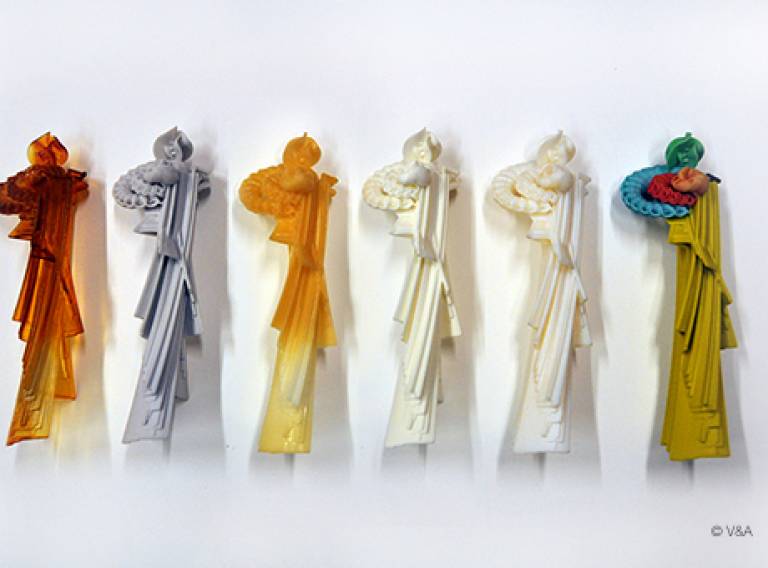3D-printed art takes heritage preservation into the 21st century
24 November 2016

Leading scientists and artists are teaming up to produce 3D-printed artworks in order to research how modern art can be best preserved for future generations.
In an unusual step for scientific research, an artwork has been produced specifically for the purpose of scientific experimentation. Researchers from the UCL Institute for Sustainable Heritage subjected the artwork to accelerated testing, discovering that many 3D-printing technologies use materials that degrade particularly rapidly. This is a potentially ominous sign for today’s contemporary art, much of which is produced using 3D-printers and other rapid prototyping methods.
Engineer-turned-artist Tom Lomax has designed ‘Out of the Cauldron’ – an intricate, colourful piece of digital alchemy pushing the limits of 3D printing. The work has been produced using 3D printers and is freely downloadable.
Much is known about how to properly conserve traditional art – typically made of natural materials like wood and stone – but little is known about the preservation of contemporary art – increasingly digital and made from new materials. The landmark project Nanorestart funded by EU Horizon 2020 could help preserve millions of pieces of modern and contemporary art. It will also provide a pool of data to help develop new methods of conservation – such as a ‘sunblock’-type coating to protect artworks from light degradation. The published artwork will thus also allow researchers across the world to join UCL Institute for Sustainable Heritage in experimentation.
Tom Lomax, the artist behind ‘Out of the Cauldron’, said:
“As an artist I previously had little idea of the conservation threat facing contemporary art – preferring to leave these issues for conservators and focus on the creative process. But while working on this project with UCL I began to realise that artists themselves have a crucial role to play.”
Carolien Coon, researcher at the UCL Institute for Sustainable Heritage, said:
“Art is being transformed by fast-changing new technologies and it is therefore vital to preempt conservation issues, rather than react to them, if we are to preserve our best contemporary works for future generations. This research project will benefit both artists and academics alike – but ultimately it is in the best interests of the public that art and science combine to preserve works.”
In a knowledge exchange project in collaboration between art and design museum V&A and UCL, artists and designers explored issues related to digital art preservation. Design with Heritage was an exciting initiative that played a crucial role in contemporary art conservation.
Boris Pretzel, Head of Science at the V&A, said:
“The Design with Heritage Project presented an excellent and rare vehicle for artists, scientists and curators to work together to explore pressing issues for the conservation and preservation of artworks made from contemporary, plastic materials.”
UCL researchers have critically assessed the most commonly used technologies used to tackle the degradation of materials in the paper ‘Preserving Rapid Prototypes: A Review’, published this week in Heritage Science. The paper includes open access to Tom Lomax’s artwork – to be downloaded and printed using 3D printers – for everyone to enjoy.
Carolien Coon is currently researching within the EU Horizon 2020 funded project Nanorestart and the EPSRC Centre for Doctoral Training in Science and Engineering in Arts Heritage and Archaeology (SEAHA) set up by UCL, the University of Oxford and the University of Brighton.
Matija and Carolien’s research has also received media attention from The Art Newspaper.
 Close
Close

